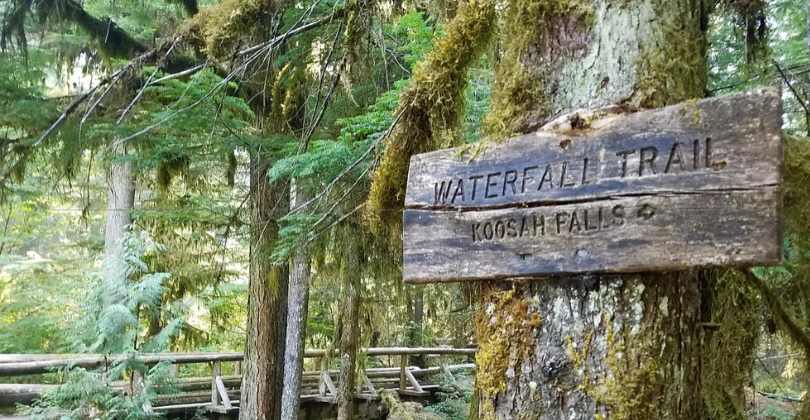Protect Yourself Solo Hiking

You’ve done your research and found the perfect hike for this weekend. It has everything! A river, waterfall, forest canopy, and the much needed solitude to reset your mind and soul. Saturday finally rolled its way to you and you’re ready. The car is fueled, hiking snacks packed, camel pack filled, and off you go!
Did you ever stop to consider that the solitude you desperately crave and travel great lengths to find, often serves as an catalyst for danger? With great solitude and remoteness comes great vulnerability. Below are five scenarios and how to prepare for them.

The Lone Wolf - It’s an unfortunate truth that some individuals prey on the vulnerable. When you’re an hour from the car hiking by yourself, you are inherently vulnerable. I’ve observed numerous “out of place” individuals that are at least 30 minutes from the car along a trail appearing to be up to no good. After living in Costa Rica I started hiking with a small machete. Once I moved back to the US I realized that my machete did a lot more than help me clear jungle and manage snakes. It was a clear and strong message that I’m not an easy mark and to leave me be. I’ve been very happy to have had the machete resting in it’s sheath on my hip in clear view when I encountered a group of men on a trail that looked like they were looking for a victim. Not today…
Bear - Remoteness = wilderness and all that comes with it. Bears are a necessary piece of the forest of which you find reprieve. In most instances, bears have little to no interest in you. However, if you’re carrying food, smell particularly delicious, or run into a mama bear your experience will likely be much more dramatic. Unless you’re versed in Kendo, I doubt your machete will help you much with a bear. Instead, make sure you’re equipped with a bear whistle and/or bear spray* so you can deter the bear from a greater distance away. Remember to make yourself big and use a strong voice, “No bear, back up bear!” One cleaver trick to manage a bear that approaches your vehicle in a car camping situation is to waft dirty hiking clothes near any vents/cracked windows.
Cougar - This one’s tricky. If a cougar wants a human snack they can stalk then attack and we wouldn’t know what hit us. That beings said, there are ways to identify cougar country and best practices if you’re one of the rare ones to come face to face with a big cat. There are often warning signs at trail heads if cougars have been spotted in the area. Keep cognizant of tracks as you hike. Cougars leave a four toe print without claw marks (since they are usually retracted). Also, they often scratch trees to sharpen their claws and to climb the tree. In fact, cougar spottings are often treetop. Try to make noise while you’re hiking. Startling a cougar is not a good introduction. Make sure if you do run into a mountain lion that they are not backed into a corner, but rather have an escape path. Also, make yourself as big as possible while slowly backing up. Show your teeth and maintain eye contact. Be thinking of what weapons you can use if he/she attacks (i.e. a walking stick, nearby rock, your machete, etc). Hope you have some good karma to see you through. Keep alert after an encounter since they have a tendency to stalk their prey.
Injury - Yes, even healthy 20 somethings get injured hiking. A simple ankle sprain can be life threatening if you’re not prepared. Step 1- Tell someone where you’ll be hiking and when you should be home. This is a must. Imagine yourself hiking in a gorgeous state park when while admiring the intricate canopy above you mis-step and roll your ankle from the countless variations along the trail. You hear a pop on your way down into agony. No problem, you can reach your phone, right? Nope, no service. If no one knows where you are, then no one will no when you should be home and where to search and rescue you. Step 2 - Carry one of the countless GPS navigation tools that come equipped with an emergency rescue feature that will send out an S.O.S. to authorities along with your exact GPS location. Step 3 - Carry the essential wilderness first aid items, such as: mole skin, emergency blanket, lifestraw, gauze, wound dressing, Benadryl, an up-to-date Epi pen (if you’re allergic to bee stings), ace wrap, and a triangle bandage.
Elements - Always wear/pack layers. Puff jackets with omni-heat are insanely light and compact these days. Pack them in your day pack and expect not to use it. It’s far better to have it and not need it than to need it and not have it. Carry a plastic poncho and emergency blanket (as mentioned above) in your daypack. There is zero chance you will stay warm if you are wet. Wear reflective clothing and keep an LED headlamp in your daypack. This will make it much easier for rescue workers to locate you from air or ground. Keep a lighter and knife in your daypack as well. Fire can save your life as can a knife that in combination with a rock can help make kindling, gut a fish, create your shelter, and defend you from potential predators.
*Make certain you’re versed in the laws pertaining to bear spray in the park or state you wish to travel to.